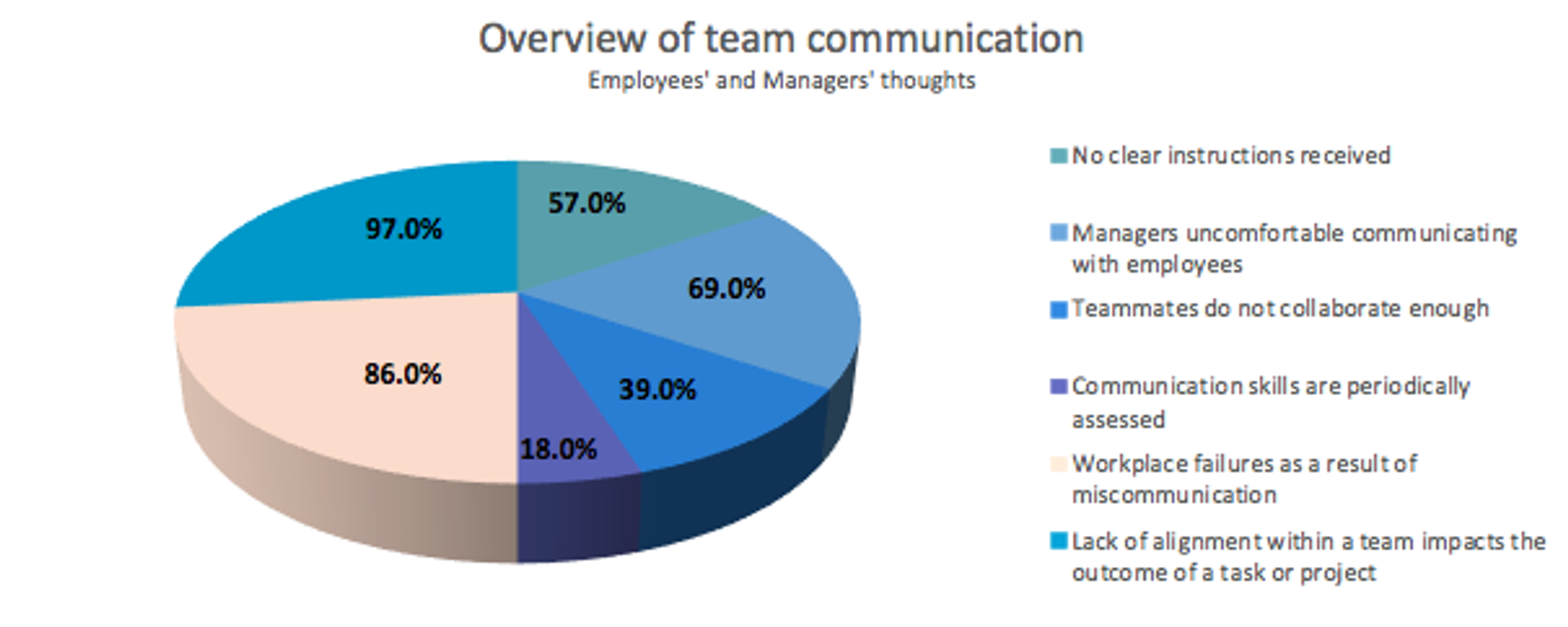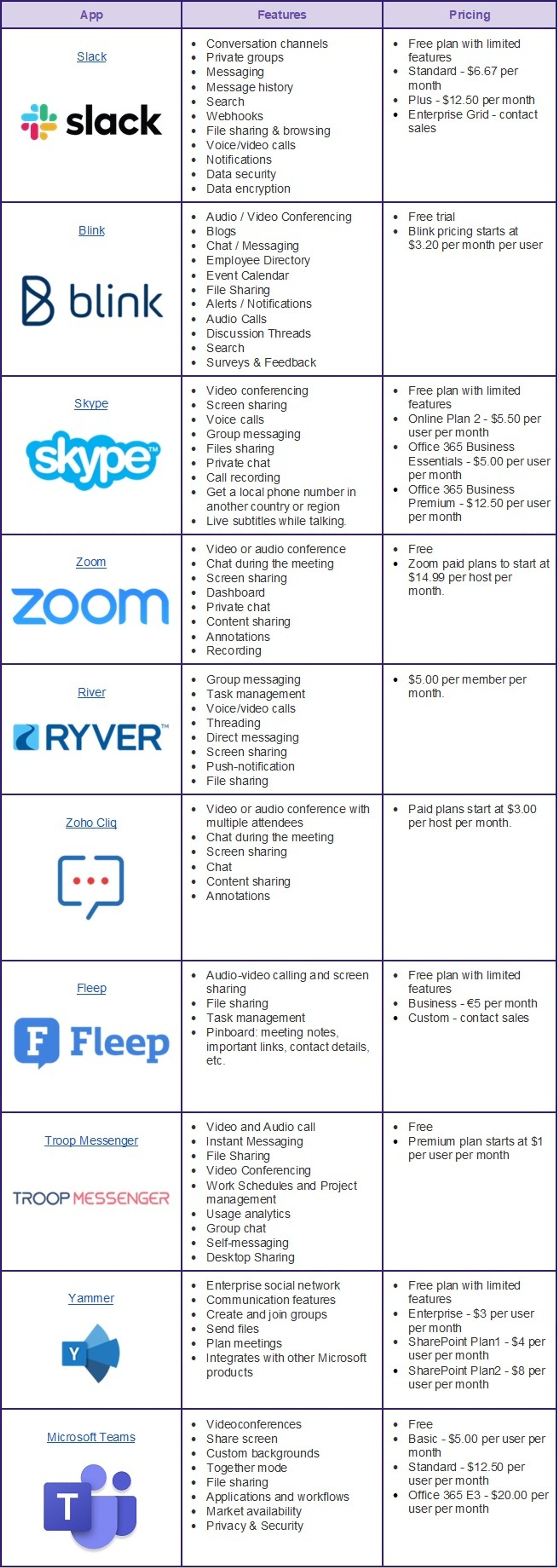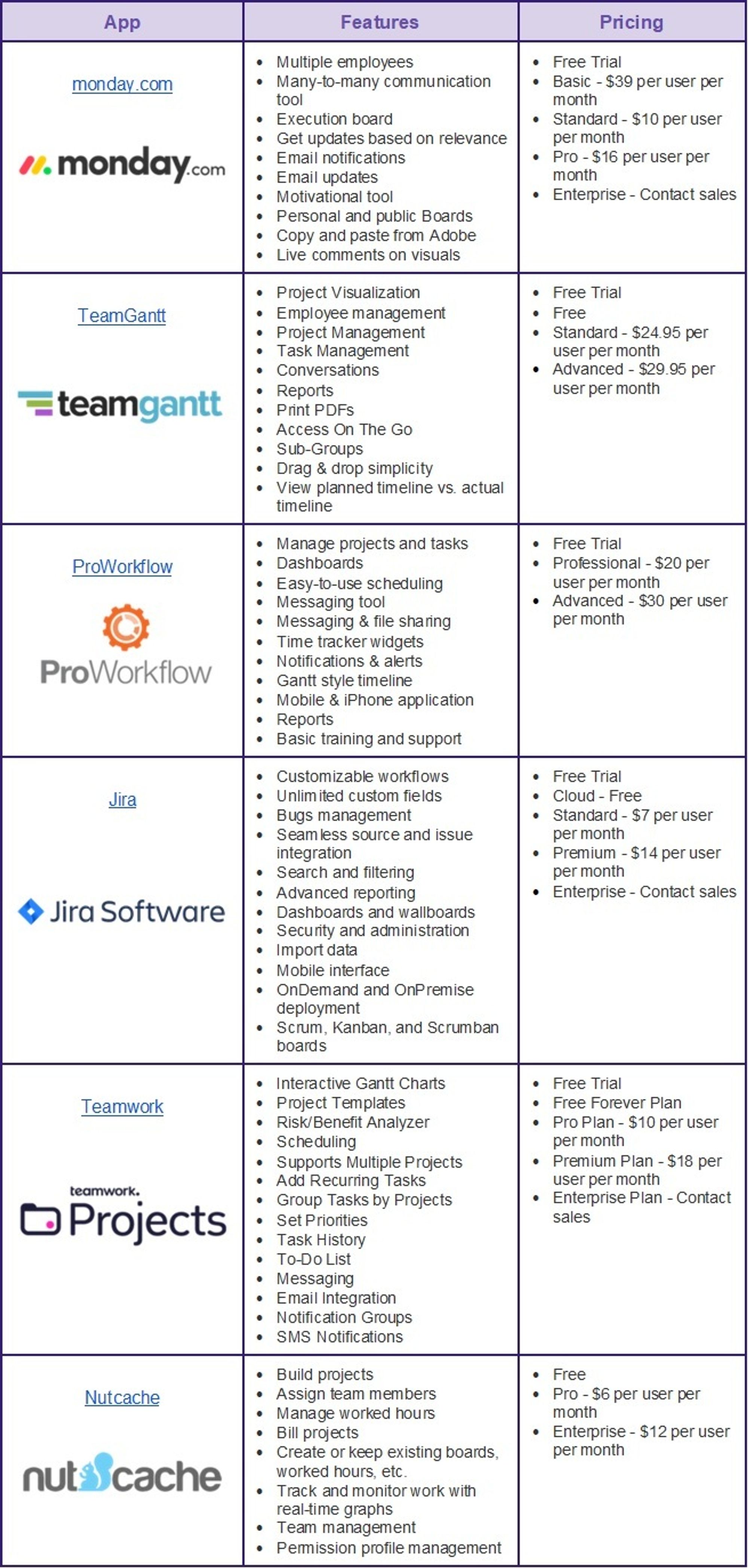Sometimes knowing how to reach all members of a team is not easy, maintaining synchrony or respecting differences, for example, could be a huge task. Using the tips and tools described in this article, your team's communication will improve 100% and you will notice this in the result, in daily productivity, and in how all processes flow flawlessly.
Team communication is one of the keys to quality teamwork. Having adequate communication has a high impact on people’s work and this is directly reflected in the final result. When information does not correctly flow in the workplace and team members are on the same frequency, the problems become evident: incomplete tasks, unmet goals, delayed deliveries; in other words, constant headaches!
In 2020, according to several pieces of research on team communication, the statistics showed the following results:

What benefits can I get from effective team communication?

As we previously mentioned, remote work has become the new modality for many businesses. But this would be impossible without good tools for effective communication. Take into account that:
- Over 77% of telecommuters report increased productivity.
- 52% of telecommuters are less likely to take time off.
- 91% of people who work from home feel more comfortable and productive than in the office.
1. Be all synchronized, at the same frequency
All members of our team should know what their role is in the team, what they are supposed to do, and how their performance impacts the outcome. Knowing and understanding tasks and activities that need to be done makes it easier to achieve success as a team!
2. Leave behind misunderstandings and confusion
Having clearly defined tasks and responsibilities helps eliminate confusion and conflict among teammates. With effective communication, you can ensure the delivery of clear goals and objectives to the team which creates a sense of tranquility amongst them. Suggesting changes, corrections or simply issuing a constructive comment are also ways of giving clarity and direction to the processes.
3. Building trust in the company
All members of the organization should have the opportunity to communicate freely. Being free to express ideas increases the level of trust between the teammates, co-workers, and the direction. The ability to listen carefully and accept different points of view, results in optimal decision-making, making the team feel safe in their work environment.
4. Improve relationships
Communication is as essential in our professional lives as it is in our personal lives, it helps improve relationships. Psychology has proved that knowing how to listen and make appropriate comments at the right time makes people feel taken into account, resulting in better, more respectful relationships at work.
5. Winning the commitment of the team
Good team communication has a direct impact on the quality of the work performed, as well as the increase in productivity. Promoting the desire to work towards a common goal makes for a smooth work environment.
Without the need to worry about misunderstandings, doubts, or conflicts, the team can focus on meeting goals and organizing their tasks and times.
"Being big is not a matter of size but attitude"
How can I improve my team's communication?
There are 2 scenarios to consider:
- Face-to-face work
- Remote work
Each of them implies a challenge on its own. In the next section, we show you 11 ways in which you can improve communication with your team, whatever work modality you choose.
1. Be aware of the difficulties of remote work
People who start working remotely will undoubtedly experience a series of changes:
- Setting your own working hours
- Digital communication
- Preparing your workspace
- Technical limitations
Being aware of possible setbacks is essential to define and implement an action plan that benefits each member of the team.
Tip: It is a good idea to create a mind map with each potential obstacle.
2. Schedule regular meetings with your team
It is important to have regular meetings with your team, so they can be aware of the progress of everyone’s tasks and they can inform of any difficulties they might facing to look for the best solution.
Depending on the frequency of the meetings they may vary in length, for example:
- Daily - very fast and only specific topics will be covered.
- Weekly - 1 to 2 hours to review progress and deliveries. Ideas or suggestions can be shared as well.
Tip: Remembering everything that is discussed in a meeting can sometimes be very complicated, recording the most important meetings can be a good way to keep track of everything. Label the recordings correctly with their topic, time, and date to share them with the team.
3. Select the best team communication app
Simplifying the way we communicate and providing the best experience for our team should be one of the main objectives of the company. Finding the best application to be able to ask questions, share ideas, ask for opinions, or give suggestions can be challenging.
Fortunately, there is an infinity of applications and platforms that can be easily incorporated into daily work life. Here’s a list of the main internal communication tools for your business, pay close attention!

4. Encourage team building activities
We can consider activities ranging from the most elaborate to a simple coffee break or a quick chat. Here’s a couple of ideas:
- Active breaks are a good way to interact with team members, it does not take more than 10 minutes and it is incredibly beneficial for our health and daily productivity.
- Find online activities: a game, trivia, or discuss a current topic.
- Organizing field trips once a year or schedule a soccer game once a month.
Keep in mind that these types of informal interactions encourage companionship and elevate the spirit of our team.
5. Clearly define the tasks and responsibilities of each team member
It is impossible to carry out a job correctly if we do not know the purpose of it, the delivery time, or the acceptance criteria.
In the organization, it is necessary to ensure that each member of the team is clear about the scope of the project and what their tasks are inside that scope. Each task needs to be correctly prioritized and timed to avoid getting delayed.
Tip: Planning tasks by sprints is a good practice that helps to keep track of tasks and their progress. Supporting each other to avoid blockages or setbacks is also very helpful.
6. Do not forget communication guidelines
You may never have considered it, but having rules for communication within a team is very important to maintain clarity and a continuous flow.
To establish these rules, some of the questions we should ask ourselves are:
- How often do we need to report our progress?
- What time is most convenient for my team to have a meeting?
- Does the time of my meeting impact the productivity of the day?
- What is the schedule of my teammates?
- How long should we take to respond in the chat?
- What to do if I don't know what to say?
- How long should I take before reporting a block?
7. Let's use project management tools
Part of the problems in team communication arises from not fully understanding assigned tasks, or not being clear in the amount of time the specific task should take. Therefore one way to improve communication is to use project management tools that support us in:
- Task organization
- Deadlines
- Requirements
- Expected outcome
- Assigning responsibility for each task
In the following list you can find the features and prices of those that are emerging as the best project management platforms of 2021:

8. Encourage two-way communication
Make sure the entire team feels free to ask questions, express opinions, make comments or suggestions. Reporting a bug early in software development can make a difference, as well as suggesting an improvement or additional option before implementation.
“Remember the worst question is the one that is not asked”
9. Show how much you appreciate the effort of your team
One of the best ways to lift employees' spirits and esteem is to show them how valuable their work is. Congratulate them on their good ideas or on completing their assignments successfully, even if they are small.
You can give small recognitions each month for good performance or for being a great partner with a small message, a card, or an infographic via email or on the office bulletin board. Little gestures can go a long way!
10. Make One-on-One interactions a tradition
These types of interactions are very important because it is a time when management and team members can express all their ideas.
In this space, it is important to acknowledge the employee’s work and communicate expectations and maybe even concerns from both sides.
With covid-19’s stellar appearance all around the world, the challenge for many companies this year has been implementing remote work as their main modality, and as a result, teams have had to adapt to new forms of communication, so that the team’s commitment and good relationships are maintained. But these challenges are also present in face-to-face work.

